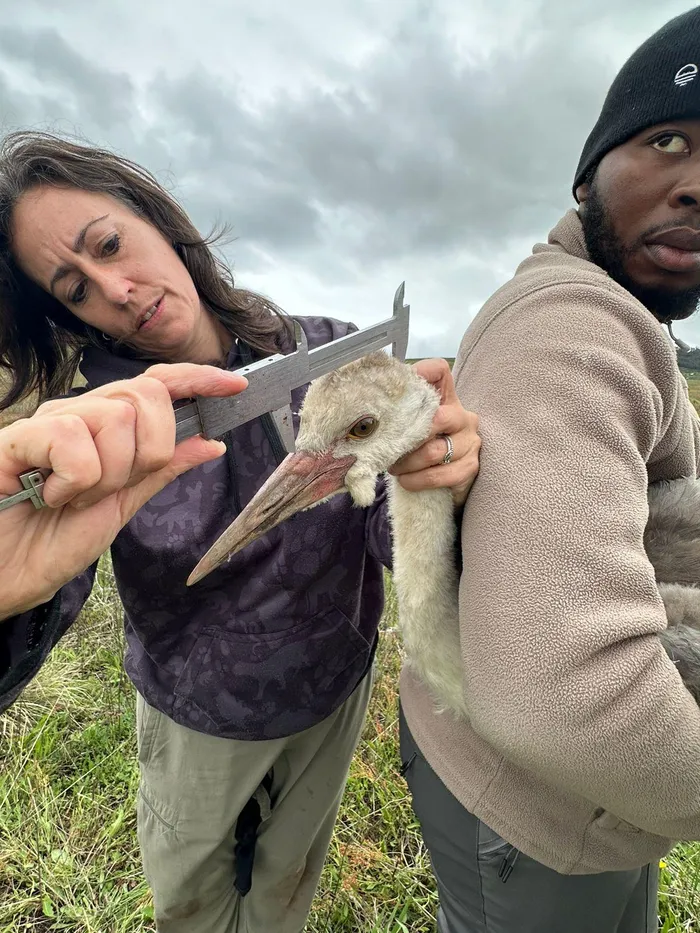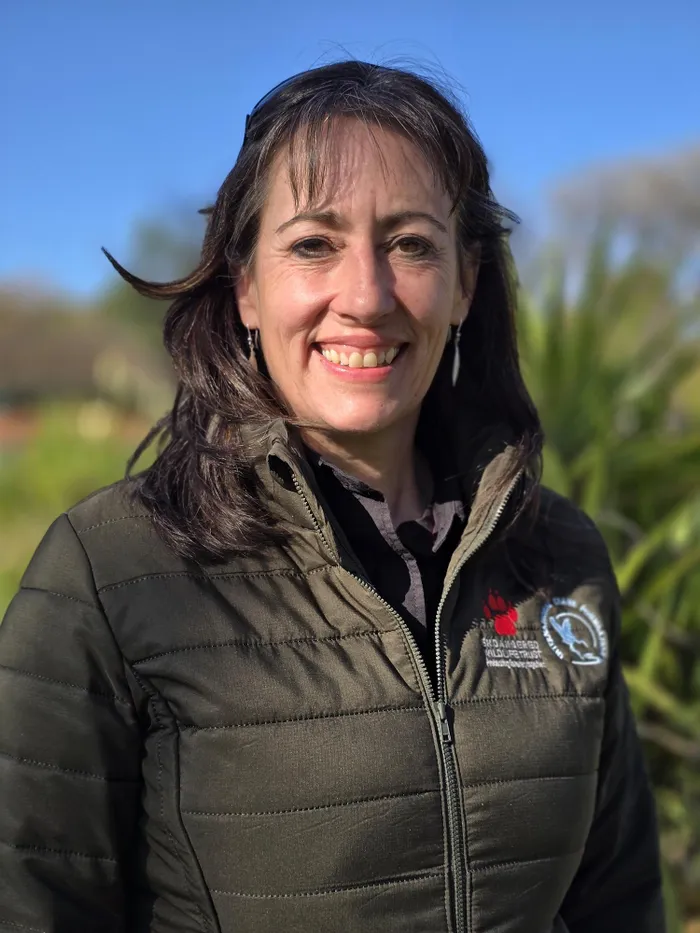
Dr Lara Fuller measuring a crane in the field.
Image: Supplied.
AS a teenager in England, Dr Lara Fuller took part in marches to highlight the importance of the environment.
Several years later, she is still in conservation, this time in KwaZulu-Natal, where she is working to save the wattled crane.
“As I became a teenager I became concerned about the environment and I didn’t like seeing the degradation. I became an activist, demonstrating against new buildings and new roads being built on habitats that were pristine.”
Fuller, now based in Howick, is the Drakensberg Project Co-ordinator of the African Crane Conservation Programme, where she leads a landscape-wide approach to crane conservation across the region. This includes conservation research, habitat restoration, and working closely with farmers, landowners, and communities to protect the wetlands that the cranes depend on.
“What drives my work today; it's a lot to do with finding the balance between natural resource management and providing food and working with landowners, farmers and communities for the benefit of the landscape, because the two things are so intricately woven, that the health for biodiversity, water, requires that everyone looks after the landscape and does their bit to keep it functioning in a way that supports people.”

Dr Lara Fuller is Drakensberg leader of the African Crane Conservation Programme.
Image: Supplied
She says wattled cranes rely on wetlands for breeding. Fuller’s personal passion is to see these birds, which have been thriving in KZN, also thriving in other parts of the country. This includes Mpumalanga, where the country’s second-biggest population was found, but whose numbers are steadily declining.
“Wattled cranes this year were downlisted from critically endangered to endangered. And we're kind of full up with wattled cranes in KZN. My future motivation is to try and see the population expand to other parts of South Africa.”
However, there are several challenges like expanding farmlands, increasing pressure on the landscape, and the permanent conversion of pristine grasslands and wetlands to other land use types.
So how do they deal with this?
“We do research around cranes to try and produce enough scientific evidence to restrict certain areas' development of pristine habitats. We also work alongside farmers in biodiversity stewardship, and we also work with all communities around natural resource management for the benefit of the ecosystem, and usually also for the benefit of agriculture. So sustainable financing through carbon trading also is part of the work we do,” said Fuller.
She and her team are currently conducting research into the efficiency of drones for monitoring crane nest sites, drone mapping to measure wetland degradation at nest sites, and looking at ways to support the restoration of wetlands to increase breeding sites for wattled cranes. They are also monitoring the use of ringing and deploying transmitters to understand the movement of cranes and how they use the landscape.
Fuller says their threat reduction work includes “mitigating powerlines, supporting sustainable natural resource management across the landscape and through the diverse communities.”
Despite her passion for wattled cranes, she didn’t start working in the field immediately. After completing a Master’s degree in Biodiversity at Leeds University, she moved to South Africa and became the Curator of Birds at the Johannesburg Zoo, where she was involved in seven different conservation projects.
“After 20 years working in zoos, I wanted to work in conservation. So I moved to KZN to work with wattled cranes.”
Fuller later received a scholarship to pursue her PhD on wattled cranes. Her advice for other women wanting to enter the field, "You may have to work harder than the men around you, but just do it. It is fulfilling, it's a life choice and I think everyone should be following their passions wherever possible.